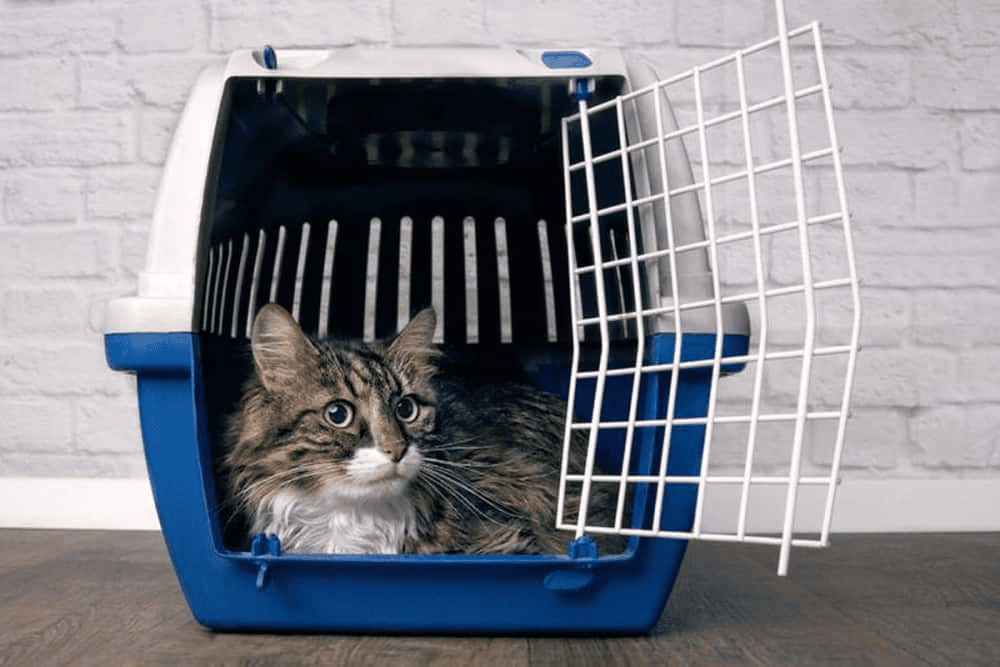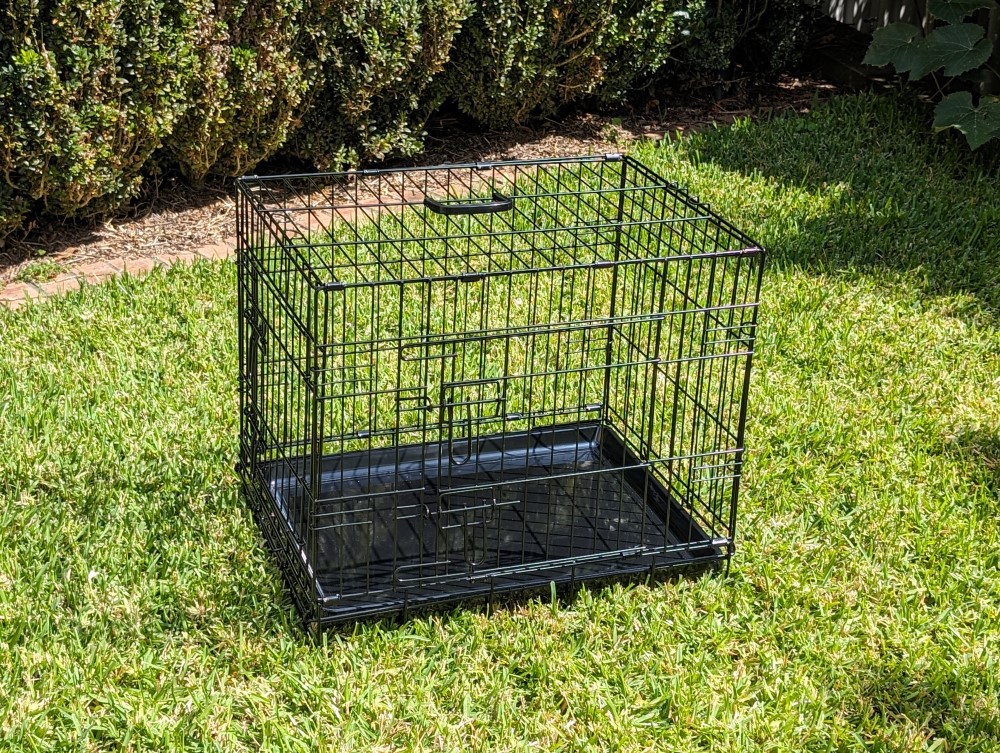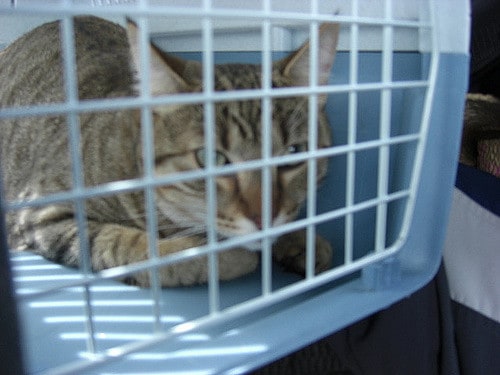Cats
When and Why You Should Cage Cats
When it comes to our feline friends, we all want what’s best for them. Have you ever wondered if and when you should cage them?
Believe it or not, there are times when caging your cat is the best thing for both of you. In this post, we’ll discuss some of those times and reasons why caging your cat may be the best option. Read on to learn more.
Cat Carriers
If you are going to cage your cat, you will need to purchase a high quality cat carrier or crate.
When choosing a carrier, look for one that is made from sturdy materials and has a safe locking mechanism. You need it to safely contain your cat without allowing it to escape.
Also make sure it has plenty of ventilation to ensure that your cat stays cool and comfortable.
The carrier should also be large enough to comfortably accommodate your cat, with enough room for them to turn around and stretch out. Coops and Cages carriers come in a variety of sizes and styles, so you can find one that is perfect for your cat.
Litter Box Training
Using a cage for litter box training is an effective way to teach young cats good bathroom habits.
By confining them to a small space, they are forced to use the litter box and learn that it is their go-to spot for relieving themselves.
Caging also allows you to keep a close eye on their progress, and intervene if necessary.
It is important to choose a cage that is just big enough for everything they need, including food, water, and their place to sleep. The litter box should be placed in an easily accessible corner so that your cat can use it with minimal effort.
By six to eight weeks of age, most cats are ready to be released into the house without worry.
However, if you find that your cat is still having accidents, you may need to continue using the cage for a while longer.
This method is especially helpful for kittens or young cats who may not have learned proper litter box etiquette from their mothers or other housemate cats.
With patience and consistent effort, you can help your cat develop good litter box habits that will last a lifetime.
Taming Feral Cats
Feral cats are felines that live on the street, typically abandoned by their owners. Some feral cats are not used to human contact. They may become aggressive or run away if you try to interact with them.
Using a cage is an effective way to tame, socialise and reintroduce feral cats to domestic life.
The key is to give the cats time to slowly adjust to their new surroundings and get used to human interaction while in the safety of the cage. Once they feel comfortable, they will be more likely to trust and bond with their caretakers.
It’s important to remember that caging should only be used as a short-term solution. Once the cats have acclimated to their new surroundings, they should be released from the cage and allowed to roam freely.
Quarantining
As a responsible pet owner, you want to do everything you can to keep your cats healthy and safe.
If one of your cats has shown symptoms of sickness or disease, it is advisable to quarantine them as soon as possible inside a cage. This can help to prevent illness spreading to your other cats.
When quarantining a sick cat, it is important to use a cage large enough for the cat to move around comfortably, with plenty of bedding, fresh water and food.
You should also check on the cat regularly, observing its behaviour and monitoring its condition. Be sure to ask your veterinarian for advice on what to do for your specific situation.
Generally, a minimum quarantine period of two weeks is appropriate, but if no other symptoms develop, the maximum quarantine period should be four to six weeks.
By taking these simple precautions, you can help keep all your cats happy and healthy.
Introducing a New Cat
So you’ve decided to add a new furry friend to your household. Congratulations!
But if you already have other cats, you’ll need to take some precautions to avoid any potential conflict.
One of the best ways to do this is to cage the new cat when you first introduce them to your home.
This will prevent any fights from getting out of hand, and also allows the new cat to acclimate to their surroundings in a less threatening way.
Once your resident cats seem comfortable with the new addition through the cage bars, you can then release the new cat and let them roam free. Continue to supervise them closely for the next few days.
Of course, every cat is different, so this process may take some time and patience. But ultimately, following this process will help ensure that everyone in your home lives happily ever after.
Transporting Your Cat
Need to transport your cat to the vet or an appointment? Or maybe you are moving house?
Transporting your cat in a carrier is the best way to ensure their safety and comfort while travelling. Cats can become easily distressed when travelling, and a carrier will help to keep them calm.
If you’re travelling by car, a carrier will also provide safety for both you and your cat.
If your cat is left loose in the car, they may become agitated and jump around, which could lead to them injuring themselves or distracting you and causing an accident.
Ahead of time, get your cat used to the carrier by filling it with comfortable bedding and feeding them inside of it. That way, when it comes time to travel, they’ll be familiar with their surroundings and less likely to stress out.
Have you used a cage to help your cat? How did it go? Let us know in the comments below!













After castration 9months cat fights with my other cats. Put him in cage bcs my kitty is afraid of him.Before they were so lovely together. How can i make them to be friendly again? Pls.advise. Thank you
Hi I adopted a stray cat from the street and some how after a few hours of feeding her and playing with her she’s comfortable with me already. But then I brought her to my room I want her to sleep in her bed I made but then again she keeps on sleeping on my bed so my question is will it be ok for me to cage her in her make shift bed? What should I do?
Hi, please don’t cage that cat.
She shows you that she trusts you, cats have a very sensitive social behaviour.
If you put your cat in a cage because she sleeps in your bed, she will feel punished. She sleeps there so she can be near you, she trusts you.
Cats are very independent, you should accept that they decide where they sleep.
I have two street cats too, they are the sweetest cats I ever had, but I know they had a very hard life and I would not dare to destroy their faith in me forcing them to do anything…
Kind regards, pet your cat for me, will you 🙂
Hi my cat is not used to be in cage, and she keeps on escaping, I want her to get used to her cage so that she will learn that, that cage is her like bedroom????
Hi Suzy.
Does a cage feel like a bedroom to you? If not, then it wouldn’t for a even more anxious and sensitive animal.
If you do go this option. Please consider getting a wire dog cage for a large breed. You can fit a small litter box, comfy bed, and food and water bowls.
We recently got two kittens from a friend and we caged them. They immediately refused to eat and drink the milk they were given. Within a week they died , one following the other in days
You shouldn’t cage cats. Kittens need a lot of touching and playing. You should have fed them a kitten formula with an eye dropper.
My cat a Russian Blue is now 2 years old. She was completely litter box trained. Recently she has began to not use the litterbox. Especially at night now. About 4 months ago she stopped popping in the litterbox. So I brought some pads and allowed her to just poop on the pad. But now she is peeing in the corners and I have carpet. It’s mostly done at night on a rug that may resemble “grass”. She is also extremely active at night, jumping on tables, the kitchen counters, and tearing up the leaves on my plants. She does none of this during the day. I do have a dog also which is crate trained. She is definitely not out at night. They play together during the day. They have a great relationship. I had the cat first and brought the dog as a 6 week old puppy when my cat turned 1 year old. My cat is bigger than my dog and she is fully grown. I am thinking about purchasing the 3 to 4 tier cat playpen and putting her in there at night. It will fit a litterbox, space for food and water, space for a bed and it comes with a hammock/swing attachment. Is it okay for the playpen to be a nightly routine? I also have an indoor garden so I don’t want it to feel like jail or punishment. I need the playpen to feel like a “going to bed at night” routine. Any advice or suggestions?
Our 17 year old cat has started peeing and now pooping on our furniture. We’ve had testing done and public all vet has prescribed amitriptyline but, aside from being a nightmare to give her, the effects wear off quickly after we discontinue it and it starts all over again. Would it be cruel to crate her when we’re out of the house and at nighttime?
Hi, i’m taking care of a mama feral mama cat, with 5 babies she had her litter inside my husband high jump mats, inside there are dogs outside in the property. I’m thinking in a cage to get them out and protect them.
since is also really hot.
What should I do please help.
Gaby
My adult male Tabby cat is going to vets for castration , delayed due to pandemic then staff shortage, is it okay to biy him a xxl cage to recover in? Mainly so he can’t jump around as he very active boy.
Some of these questions are quite old but will answer in case others see them. Be sure to have your cat checked by your vet if they start peeing and/or pooping outside the litter box. There are many things that can make a cat stop using the box — have you changed their litter or moved the box? (With a litter change, try to mix the old and new together to make it gradual.) Is there anything new in the home — a puppy, new baby, new room mate? Is you cat declawed? Declawed cats often stop using the litter box and testing indicates that they often have residual pain from the surgery — if your cat is declawed, try to find a litter that is soft and pliable.
Be sure that nothing has caused the cat pain or fear in the litterbox, enough that it would make them not want to use the box again — then go about changing the location, fill etc.